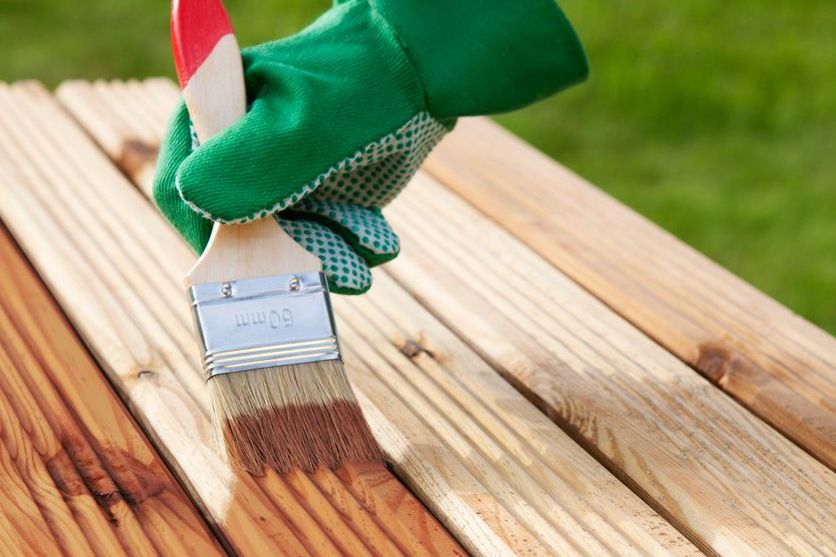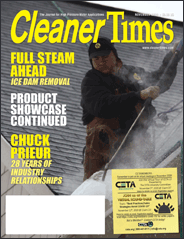
Choosing the Right Sealant
by Diane M. Calabrese |Published March 2025

A serious and sustained polar vortex brings to mind so many things, such as sealants.
There’s nothing like a period of extreme cold—moisture with just enough thawing for water to form, penetrate cracks, and freeze; incessant wind; and abundant chemicals on pavements—to put sealants to the test. Thus, while many thoughts turn to the causes of the polar vortex or its implication for the day-to-day of life (e.g., school closures, heating bills, and water main breaks), a few reflective sorts mull over the last sealant applied.
Choosing the right sealant begins with knowing the substrate—its virtues and its vulnerabilities when standing up to the elements. Fortunately, manufacturers and distributors of sealants provide selection help.
Most important is identifying the primary purpose of the sealant. Jane Doe in Fargo might want to protect her brick patio while John Smith in Brownsville might want to protect his wooden deck.
Sealants are specific to not only the task but also to the environs in which they will be used. Thus, choosing a one-size-fits-all will, without a bit of luck, not be the best way to go.
“A sealant is a product that applies a barrier to a surface that at minimum sheds moisture and does not allow it to penetrate that surface,” says Linda Chambers, brand and sales manager at GCE/Soap Warehouse Brand in Norcross, GA. Methods of formulation differ.
Understanding the formulation of a sealant is essential to determining whether it is the best choice for a substrate. Some sealants are water based, explains Chambers. Some use a solvent other than water.
Moreover, says Chambers, some solvents penetrate the substrate. In addition, some solvents are formulated to repel more than moisture; they can repel salt and oils.
Composition of a substrate can make it a challenge to seal. “Surfaces that are extremely dense make it difficult for the sealant to penetrate or adhere to that surface,” says Chambers. “The more porous or rough the surface is, the easier it is for the sealant to attach or penetrate, even without additional penetration properties of the product.”
Candid conversation with an expert representative of the sealant manufacturer or distributor is the best way to identify the right sealant. “Understanding what the customer’s desires and expectations are for the surface and its intended use is the goal,” says Chambers.
“Sometimes what the customer wants to achieve is not possible or safe to give them,” explains Chambers. “For instance, a customer wanting a travertine pool deck to have a high shine.”
Travertine, a limestone often harvested around mineral springs, has beautiful patterns, which understandably an owner wants to highlight. It is extremely porous, and on a pool deck its subtle roughness prevents the deck from being too slippery.
“Putting a high-gloss poly finish on travertine would make the pool deck a safety hazard when wet, which it will be when in use,” explains Chambers. Experts on sealants know how to balance the benefits of sealants with the optimal match for a surface.
“We have heard of cars not being able to climb up or actually sliding down a driveway once it has rained or has snowed after a high-gloss sealant application,” explains Chambers. Again, seek advice on a sealant match and heed it.
Contractors have multiple reasons for wanting the outcome of a sealing project to be excellent. They want a customer to be pleased with the result, of course. But they also want to be sure that while aiming to protect a substrate they did not introduce a slip and fall hazard for a property owner.
Practical Meets Possible
The longest-serving sealant may differ from the sealant that provides the exact hue a customer wants. Just as with every other choice in life, having everything is almost never an option.
A customer in search of a sealant should be able to cite his or her priority. It might be, “I want to fortify this concrete pad so that it resists cracking (and crumbling).” Perhaps the pad can be a bit slippery when wet because no one stands on it, given the pad serves only as a place for trash cans to stand.
Be honest about needs. Then, get advice from an expert, even if the expert relays the information through a digital channel. Avoid guessing after quick reading of product labels.
The word seal derives from a 15th century French word that was used in many contexts just as our English “seal” can mean to fasten or close a gap. The Latin root converges with the wax mark (often containing an image) on a document.
With a sealant, what we want is something much more permanent than “sealed lips,” but we know that nothing lasts in perpetuity. How can a choice be made that results in the best of the possible?
Really know the substrate, says Missy Ordiway, business development manager at Deco Products Inc. in Denver, CO. “The first step in selecting the correct sealant for a substrate is to identify the type of substrate you are sealing.”
Identify that “type” in all its dimensions. “This involves understanding the material’s composition, condition, and specific characteristics,” says Ordiway, and she shares a few examples of the variants of characteristics.
Start with material type. “Determine whether the substrate is concrete, asphalt, natural stone, pavers, brick, or another surface,” says Ordiway. “Different materials have different porosities and chemical compatibilities that dictate the type of sealant needed.”
Then, move to the surface condition. “Assess the substrate for cracks, efflorescence, stains, moisture levels, or previous sealant applications,” says Ordiway. “This helps determine whether additional prep work—for example, cleaning, stripping, or repairs—is required before sealing.”
Finally, evaluate the environmental factors. “Consider the exposure conditions the substrate will face, such as UV exposure, freeze-thaw cycles, traffic, exposure to salts, chemicals, or moisture,” says Ordiway. “These factors help narrow down a sealant that offers the necessary protection.”
Ordiway tells us that the time to consider aesthetics is after the thorough evaluation of the substrate. “Once the substrate is identified, and its conditions are evaluated, you can select a sealant that aligns with the materials needs and desired finish—for example, matte, gloss, or natural appearance.”
Solid as a Brick
Give and take with the environment is the essence of certain construction materials. Most substantial among them are brick and framing lumber (genuine lumber, not particle board of any kind).
Proceed with extra care when considering applying a sealant to the substrates that have long stood up to the give and take of interior and exterior conditions of structures. In some instances, applying a sealant cuts off the exchange and leads to trouble.
Because of its commitment to maintaining and preserving historic structures, the U.S. General Services Administration (GSA.gov) has commissioned and summarized an enormous amount of research on best practices for protecting substrates. For contractors, in particular, the GSA’s guidance on topics such as “Sealing or Painting Previously Sand-Blasted Brick Masonry” is a good place to get a quick grounding in what to do/not do.
GSA’s recommendations cover everything from water-based and solvent-based sealers, storage and handling, and application tools to relevant environmental regulations. GSA’s advice makes an excellent companion to expert advice from representatives of manufacturers and distributors.





